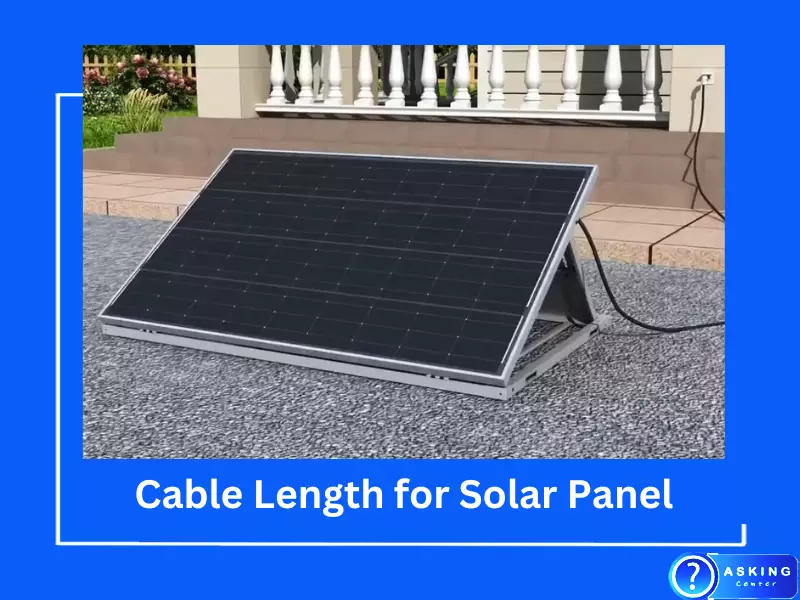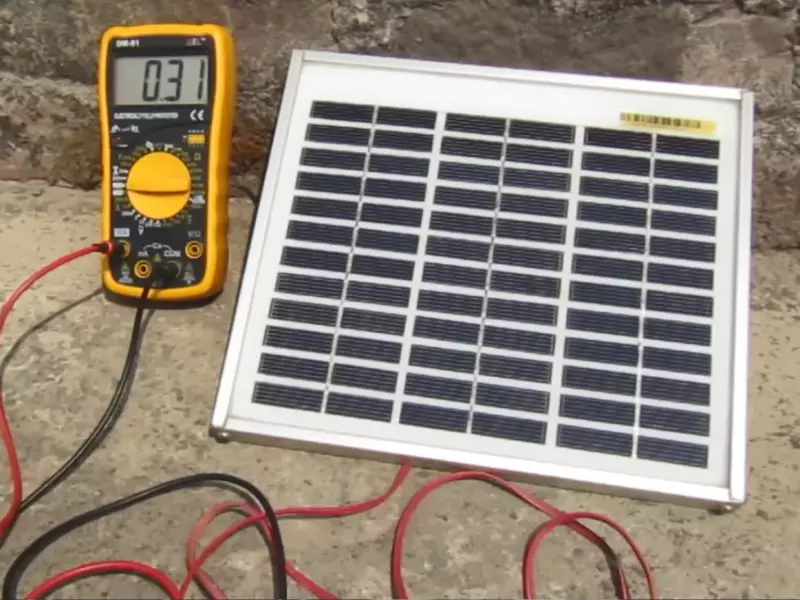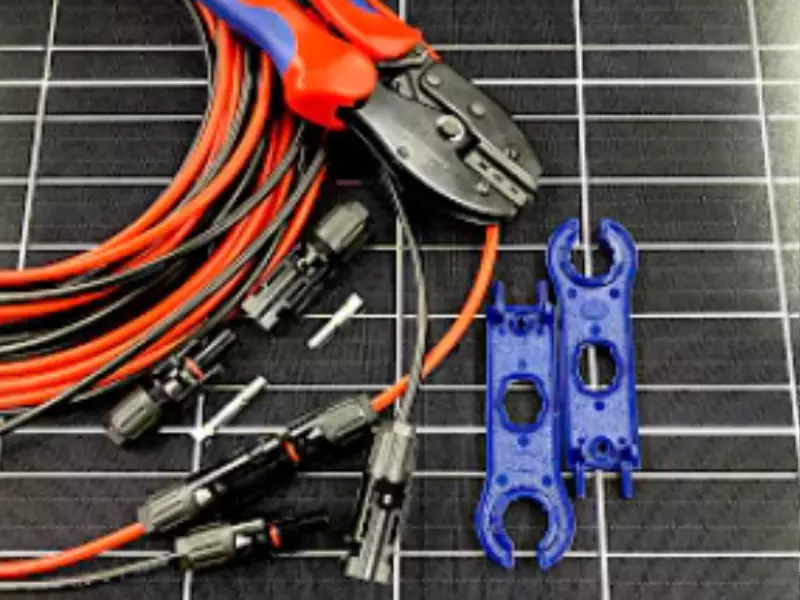Solar energy is an increasingly popular renewable power source worldwide. The efficiency of this energy form heavily depends on how effectively the solar panels are installed and connected. This includes the careful consideration of the cable length connecting the solar panel to the inverter and the safe distance from the inverter itself.
The maximum cable length for a solar panel and the safe distance from the solar inverter are crucial factors for efficient energy production. Misjudging these distances can result in energy loss and decreased efficiency of the solar power system.
Diving into the details of solar energy generation and the importance of proper cable length and component placement will shed light on optimal solar system setup. A better understanding of these parameters can help homeowners, businesses, and solar installation professionals ensure efficient and effective solar power generation.
Solar Panels and Solar Inverters
Solar Panels
Solar panels, the core components of a solar power system, convert sunlight into electricity. This process, known as the photovoltaic effect, involves absorbing sunlight, which excites electrons and generates a flow of electricity.

Solar Inverters
Solar inverters, on the other hand, are the devices that convert the direct current (DC) electricity produced by the solar panels into alternating current (AC) electricity. AC is the type of electricity used in most homes and businesses.
The Importance of the Cable
The cable that connects the solar panel to the inverter plays a crucial role. It transmits the DC electricity from the solar panels to the inverter, where it is converted into AC. The length of this cable significantly affects the efficiency of the energy transfer.
What is Power Loss?
Power loss refers to the reduction in electrical power during transmission from one component of the system to another. In a solar power system, power loss can occur during the transmission of electricity from the solar panels to the inverter due to resistance in the connecting cable.
Factors contributing to power loss in a solar system include cable length, cable thickness, the material of the cable, and the voltage of the electricity being transmitted. Power loss leads to decreased efficiency of the system as the amount of usable electricity is reduced.
What Determines the Maximum Cable Length for Solar Panels?
The maximum cable length for solar panels is primarily determined by the allowable voltage drop and power loss. Longer cables lead to more resistance, causing a more significant voltage drop and increased power loss.
Voltage Drop and Power Loss
When electricity is transmitted over a cable, the voltage decreases along the length of the cable due to resistance. This is known as a voltage drop. The longer the cable, the greater the voltage drop and associated power loss.
Cable Size and Material
The size and material of the cable also play essential roles in determining the maximum cable length. Larger-diameter cables, known as higher gauge cables, have less resistance and therefore experience less voltage drop and power loss. Copper cables are generally preferred over aluminium because copper has a lower resistance.
What Gauge Wire is Best?
The choice of wire gauge depends on the specific requirements of the solar power system, including the system’s voltage and the maximum current the system will produce.
For most residential solar power systems, a 10 or 12 AWG (American Wire Gauge) copper wire is typically used due to its adequate capacity for the current produced and its resistance to voltage drop.
A real-life example illustrating this choice is the “A Charging Cord” scenario, where homeowners had to replace a 14 AWG cord with a 10 AWG cord to charge an electric vehicle efficiently.

How Far Can a Solar Panel be from an Inverter?
The safe distance between a solar panel and an inverter depends on multiple factors, including the power generated by the panel, the size of the wire, and the acceptable power loss.
For a standard residential solar power system, a distance of 20-25 feet is usually acceptable. However, it’s essential to consult with a solar installation professional to calculate the safe distance based on the specific parameters of your system.
How Far Can Solar Panels Be from Battery?
Similar to the distance between solar panels and inverters, the distance between solar panels and batteries also has a significant impact on system efficiency.
Excessive distance can lead to increased resistance and thus higher power loss. However, the acceptable distance between the panels and the battery will depend on the system’s specifics, such as the total power output, cable gauge, and acceptable power loss.
The closer the panels are to the battery, the more efficient the system tends to be. In most residential setups, keeping the panels within 30-50 feet of the battery bank is typically recommended.
Do You Need an Inverter for Solar Power?
An inverter is a crucial component of a solar power system as it converts the DC electricity produced by the solar panels into the AC electricity used in most homes and businesses.
However, in certain scenarios, such as a solar-powered outdoor light or a small, off-grid DC appliance, an inverter might not be required as these devices can run directly on DC electricity.
Exceeding the Maximum Cable Length
Exceeding the recommended cable length or safe distance between components can have several negative consequences on a solar power system.
Firstly, it can lead to significant power loss, reducing the amount of usable electricity generated by the solar panels. Secondly, it can potentially cause an overload and damage the inverter. Lastly, it can increase the system’s overall energy loss, leading to inefficiencies and increased electricity costs.
How Far Apart Should Solar Components Be?
The distances between various solar components should be carefully considered to optimize system efficiency and safety.
For example, inverters should be installed close to the solar panels to minimize voltage drop and power loss. Batteries, on the other hand, should be located in a cool, shaded area to prevent overheating.
A professional installer can provide guidance on the optimal distances between various components based on the system’s specifics.

How Far Can Solar Panels Be from a House?
The placement of solar panels relative to a house depends on a number of factors, including the available space, the house’s orientation, and any potential shading from trees or other structures.
Typically, for roof-mounted solar panels, the distance from the house is not an issue. However, for ground-mounted solar panels, the panels are usually installed within 100 feet of the house to minimize power loss.
How Far Can You Run Solar Panels?
The maximum distance you can run solar panels from the inverter or battery depends on the specific requirements of your system and the acceptable power loss.
However, for optimal efficiency, it’s generally recommended to keep the solar panels as close to the inverter and battery as possible. Again, a professional installer can provide specific recommendations based on your system’s characteristics.
How Far Apart Should Solar Panels Be?
The spacing between individual solar panels is critical to ensure that each panel gets sufficient sunlight and doesn’t cast shadows on the other panels.
The ideal spacing depends on the local climate, the angle of the sun, and the type of solar panels. As a general rule, panels should be spaced a minimum of 2 feet apart to avoid shading.
Tips to Optimize Cable Length and Distance from the Inverter
Optimizing your solar power system involves carefully considering the cable length and the distance between the panels and the inverter. Some tips include using a high-gauge wire to reduce power loss, keeping the inverter as close to the panels as possible, and consulting with a professional installer for personalized advice.
Conclusion
Understanding the importance of maximum cable length and the safe distance from the solar inverter is crucial for any solar power system. By paying careful attention to these aspects, one can optimize their system for maximum efficiency and energy production.
As the shift towards renewable energy continues, the understanding and optimization of these factors will continue to play a pivotal role in solar energy deployment.
